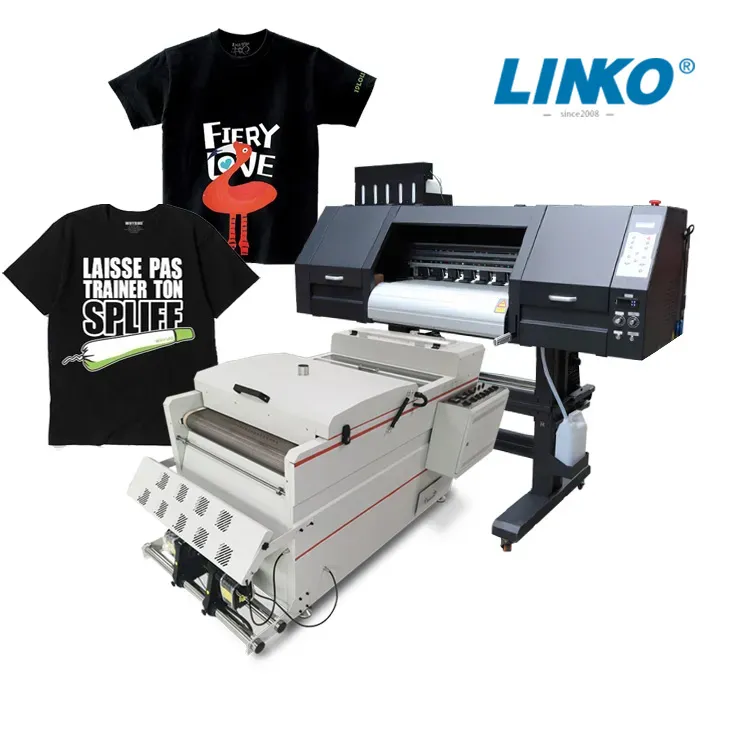Ultimate Overview to DTF Printing Strategies for Sensational Fabric Styles
Embarking on the trip of understanding DTF printing methods can open up a world of possibilities for producing visually exciting textile designs. In this guide, we will certainly check out the detailed information of DTF printing, from understanding the essential essentials to unraveling progressed shade strategies that can boost your designs to brand-new elevations.
Understanding DTF Printing Essentials
DTF printing, a procedure that includes transferring designs from an unique movie to textiles using heat and stress, creates the foundation of fabric printing methods. This ingenious technique allows for top quality, vibrant layouts to be effortlessly transferred onto various textiles with precision and detail. The primary step in DTF printing involves developing or choosing a design that will be printed onto the fabric. This design is after that printed onto an unique movie using a DTF printer, which makes use of details dyes or pigments to ensure color precision and toughness.
The final outcome is a magnificent, long-lasting textile design that is washable, versatile, and resistant to fading. Generally, recognizing the essentials of DTF printing is crucial for grasping this contemporary textile printing technique.
Choosing the Right Fabric Materials
Having actually established the foundational principles of DTF printing techniques for textile styles, the next vital consideration lies in choosing the suitable textile products to enhance this cutting-edge procedure effectively. The success of a DTF print largely relies on the compatibility in between the selected fabric and the printing technique. When choosing fabric products for DTF printing, it is vital to take into consideration the material's composition, weave, and texture. Fabrics that work well with DTF printing consist of polyester blends, spandex, nylon, and other synthetic products. These materials normally have a smooth surface that enables dynamic and comprehensive prints. In addition, the stretchability of these materials can accommodate the heat transfer procedure associated with DTF printing without distorting the layout. It is a good idea to prevent natural fibers such as cotton or silk, as they might not yield the very same level of print clearness and durability. By selecting the appropriate fabric products, developers can optimize the possibility of DTF printing to develop lasting and spectacular fabric styles.

Grasping the Printing Refine
To excel in DTF printing techniques for textile layouts, grasping the printing process is essential for achieving high-grade and constant outcomes. The temperature, stress, and duration of warm application should be carefully regulated to make certain correct attachment of the style to the fabric. By refining each of these steps in the printing procedure, designers can continually create sturdy and spectacular fabric designs with DTF printing methods.
Enhancing Designs With Shade Techniques

Moreover, trying out shade slopes can bring a sense of motion Discover More Here and fluidness to the design. By blending colors flawlessly, a gradient effect can be accomplished, adding a modern and dynamic touch to the fabric style. Furthermore, using color blocking techniques can create striking and bold visuals by comparing various solid colors in distinct sections of the design.
In addition, incorporating metallic or neon colors can provide a special and distinctive element to the textile layout, making it attract attention and emanate a sense of vibrancy. When strategically applied, these shade methods can elevate the total aesthetic appeal of fabric styles, making them much more memorable and exciting.
Troubleshooting Common DTF Printing Issues
After checking out different shade methods to enhance fabric designs, it is vital to address usual DTF printing concerns that may emerge during the production process. One usual problem is inadequate bond, which can arise from inappropriate treating temperatures or times. To settle this issue, ensure that the treating setups are accurate which the glue utilized is ideal for the certain material being published on. Another regular find out this here obstacle is color disparities, where shades may show up in a different way than expected. This can be triggered by inaccurate color profiles or settings in the printing software program. To tackle this, double-check the color settings and accounts to guarantee they match the desired design. Furthermore, concerns with image clearness and intensity can take place as a result of low-resolution images or incorrect printing methods. To resolve this, constantly use high-grade images and adjust the printing settings for ideal clarity. By knowing these typical issues and carrying out the required troubleshooting steps, you can enhance the total high quality of your DTF published textile styles.
Conclusion
In final thought, mastering DTF printing strategies is vital for creating sensational why not find out more textile layouts. With practice and focus to detail, one can create gorgeous and unique fabric layouts using DTF printing strategies.
)))))
DTF printing, a procedure that entails transferring designs from an unique movie to textiles utilizing warmth and pressure, creates the foundation of fabric printing techniques.Having developed the fundamental principles of DTF printing techniques for fabric designs, the next critical factor to consider exists in selecting the suitable fabric products to complement this innovative process successfully. By picking the right textile materials, designers can optimize the potential of DTF printing to create sensational and long-lasting textile styles.
To stand out in DTF printing strategies for textile designs, understanding the printing procedure is essential for achieving high-quality and consistent outcomes. DTF Printing. By honing each of these steps in the printing procedure, developers can continually produce sensational and long lasting textile designs with DTF printing techniques
Comments on “DTF Printing Transformation: Releasing Imagination in Textile Style and Production”